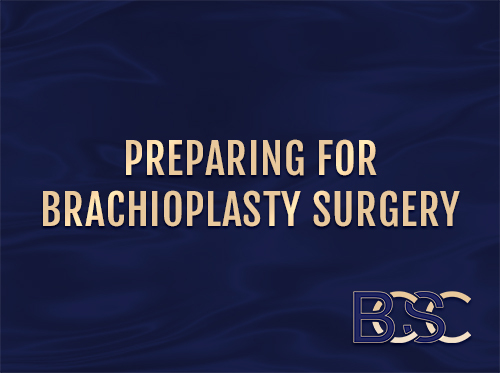Abdominoplasty After Weight Loss
Abdominoplasty addresses excess skin and tissue in the abdominal area after significant weight loss. It offers a solution by removing excess skin and fat, tightening the abdominal muscles, and creating a smoother, more toned contour.
In recent years, abdominoplasty has gained popularity in Australia, especially for women seeking to reclaim their bodies after weight loss. As per the latest studies, the number of women undergoing this procedure has risen substantially, with a report indicating an increase of over 30% in the past decade alone.
Weight loss can result from dieting, exercising, or bariatric surgery. Weight loss can lead to discomfort, functional limitations, excess skin, and muscle weakening or separation. Today, we will explore abdominoplasty after weight loss, covering indications, surgical techniques, risks, and more.
Reasons to Consider Abdominoplasty After Weight Loss
When a person gains weight, their skin stretches to accommodate the increased volume of fat cells. Additionally, the abdominal muscles weaken, and stretch marks form. The increase of fat in the intra-abdominal area leads to muscle separation (diastasis recti) in the midline. This can be pronounced especially for women after pregnancy.
When a person loses weight, it decreases the amount of fat in the body. This is especially true within the subcutaneous layer. The person might still experience sagging or stretched skin even after their weight loss journey. This can result in loose, sagging skin and tissue that may hang down over the waistline, creating an appearance commonly referred to as an “apron” or “pannus.” This excess skin can cause discomfort and hinder physical activity.
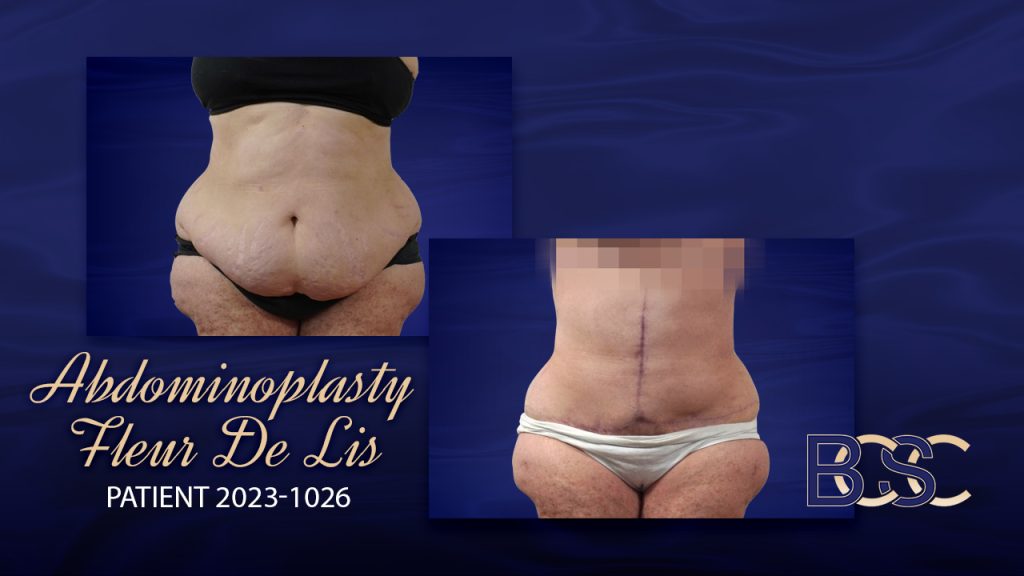
Fleur de lis abdominoplasty performed by Dr Bernard Beldholm
Disclaimer: Operation performed by Dr Bernard Beldholm. Adult content, surgery has risks; individual results vary, seek 2nd opinion. Please see the full disclaimer.
Significant weight loss also contributes to weakened abdominal muscles and poor core strength. It is difficult to perform everyday tasks that require core stability, such as bending, lifting, and twisting with weakened abdominal muscles.
Abdominoplasty addresses this issue by incorporating a procedure called plication (diastasis recti repair) during the surgery. Plication involves suturing the weakened or separated abdominal muscles, tightening them to create a firmer and more toned abdominal wall.
Surgical Techniques Abdominoplasty After Weight Loss

Abdominoplasty surgery technique | BCSC
Surgeons use several surgical techniques for abdominoplasty after weight loss. The ideal technique depends on the patient’s anatomy, goals, and the extent of excess skin tissue. Standard surgical methods are:
Full Abdominoplasty
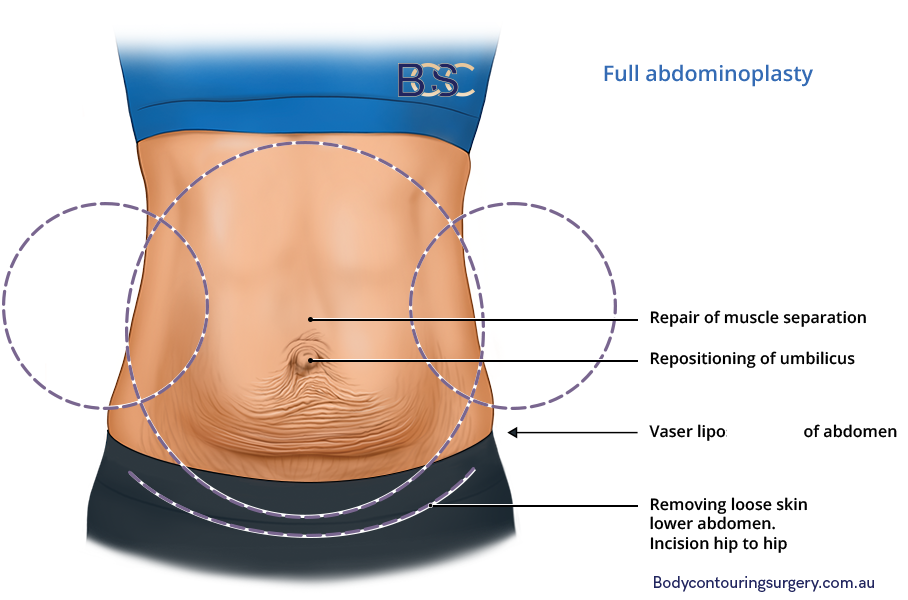
Full abdominoplasty | BCSC
This procedure involves a horizontal incision, which is made above the pubic area and extends from hip to hip. The surgeon then lifts the skin and tightens the underlying muscles. If necessary, he removes excess skin and fat and re-drapes the remaining skin to create a smoother, firmer contour. This procedure will suit patients with excess skin and tissue in the abdominal area. Studies have reported high success rates for this technique, with satisfaction rates exceeding 90% in many cases.
Extended Abdominoplasty
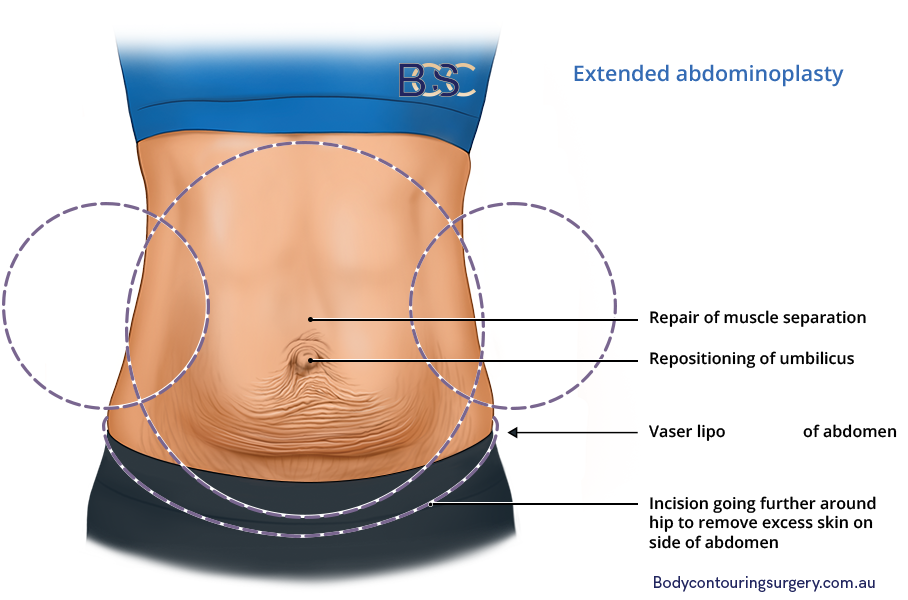
Extended abdominoplasty | BCSC
The procedure involves a longer incision beyond the hips. It addresses excess skin and tissue on the sides of the abdomen and the lower back. This procedure suits patients with significant excess skin and tissue in the front and sides of the abdomen.
Mini Abdominoplasty

Mini abdominoplasty | BCSC
Mini abdominoplasty is a less invasive variation of the full abdominoplasty. The smaller incision primarily addresses excess skin and tissue on the lower abdomen below the navel. This procedure suits people with mild to moderate excess skin and tissue in the lower abdominal region.
Reverse Abdominoplasty
In this technique, the incision is made on the upper abdomen, usually below the breasts. Surgeons use this technique less frequently and primarily in patients with excess skin and tissue in the upper abdomen.
Fleur-de-lis Abdominoplasty

Abdominoplasty surgeons use this technique when there is excess skin and tissue horizontally and vertically. It involves a vertical incision along the midline of the abdomen, resulting in a scar that resembles a “fleur-de-lis” shape. This technique allows for more extensive removal of excess skin and tissue and may be suitable for patients with massive weight loss or significant abdominal laxity.
While fleur-de-lis abdominoplasty offers significant benefits in abdominal contouring, patients must understand that it typically results in more extensive scarring than traditional or standard abdominoplasty. However, many patients find that the improved abdominal appearance and increased confidence outweigh concerns about scarring. Ideally, these scars tend to fade over the years.

Fleur de lis abdominoplasty Before & After performed by Dr Beldholm
According to Dr. Bernard Beldholm, FRACS M.B.B.S, B.SC (MED), “A patient must discuss the available surgical techniques with a FRACS specialist surgeon to determine the most appropriate approach for achieving their desired results. The consultation allows the patient to ask questions, address any concerns, and gain a clear understanding of the entire surgical process, including preoperative and postoperative care.”
Recovery Process of Abdominoplasty After Weight Loss

Every patient’s recovery process differs depending on individual factors, like the extent of surgery and the patient’s overall health. Below is an overview of the general recovery process after abdominoplasty for weight loss:
Immediate Postoperative Period (Days 1-3)
Immediately after the surgery, the patient is admitted to the hospital for close supervision for pain management and to ensure they recover well. As needed, healthcare professionals administer antibiotics and pain medication to control discomfort.
The First Few Weeks
After discharge from the hospital, the patient is given instructions for postoperative care and follow-up appointments. It is essential to adhere to activity restrictions, including avoiding strenuous activities, heavy lifting, and bending at the waist to prevent complications and promote proper healing.
Midterm Recovery (weeks 2-4) Postoperative
Swelling and bruising should gradually subside during this period. Patients may begin to see initial improvements in abdominal contour. Dr. Burholme encourages all his patients to continue wearing compression garments as instructed and to follow any additional postoperative care recommendations. This will keep the recovery moving forward smoothly.
Months (1-3)
By this time, most of the swelling has resolved. According to Dr. Burholme, “Patients can appreciate more noticeable improvement in their abdominal contours however, some residual swelling may persist. This is common, especially in the low abdominal area, but improves over time.”
Long-term recovery (months 3 and beyond)
Full recovery from abdominoplasty after weight loss may take several months, and final results may continue to improve over a year or more. One should maintain a healthy lifestyle, which includes regular exercise and a balanced diet to optimise and sustain abdominoplasty results.
As all patients are different, the healing process can vary from one person to another.
Throughout the recovery process, patients are required to adhere to their surgeon’s postoperative instructions, attend the scheduled follow-up appointments, and communicate with their specialist surgeon should any problem arise. By adhering to these guidelines and allowing adequate time for healing, patients can achieve optimal results and enjoy the benefits of abdominoplasty after weight loss.
Outcomes Of Abdominoplasty After Weight Loss

Patient satisfaction rates following abdominoplasty after weight loss are overwhelmingly favourable, underscoring the procedure’s transformative impact on patient’s lives. According to recent surveys, over 90% of patients report high satisfaction with their abdominoplasty results, citing improvements in body image and overall quality of life. These statistics reflect the significant positive impact of abdominoplasty on patients’ physical and psychological well-being. It reaffirms its status as a highly effective solution for addressing excess skin and tissue after weight loss.
In addition to high overall satisfaction rates, further examination of patient-reported outcomes reveals the multifaceted benefits of abdominoplasty after weight loss. Studies have shown that patients often experience improvements in various aspects beyond physical appearance.
Psychologically, abdominoplasty can have a profound impact on self-esteem and body image.
Physically, patients typically experience a smoother and firmer abdominal contour, leading to enhanced mobility, reduced skin irritation, and improved posture. Abdominoplasty after weight loss can also result in improved abdominal function. The procedure can enhance core strength and stability by tightening the abdominal muscles and removing excess skin and fat, leading to better support for the spine and pelvis.
Risks and Complications Associated With Abdominoplasty

Just like any other medical procedure, abdominoplasty after weight loss carries certain risks and potential complications. While most patients undergo abdominoplasty without experiencing significant issues, it is essential to be aware of the potential dangers, which may include:
- Bleeding – Bleeding may occur during the surgery or the postoperative period. While the surgeon typically controls some bleeding during surgery, excessive bleeding can lead to the formation of a hematoma.
- Hematoma – Hematoma is a collection of blood that pools under the skin at the surgical site. It appears swollen and bruised and may cause discomfort or pain. Hematomas can vary in size and severity.
- Seroma formation – Fluid accumulation under the skin, known as seroma, can occur after surgery and may require aspiration or drainage to prevent further complications.
- Infection – There is a risk of infection at the surgical site, manifesting as redness, swelling, or warmth. General specialist surgeons may prescribe antibiotics to treat or prevent disease. Statistics indicate that infection rates range from 2-4%, emphasizing the importance of diligent postoperative care.
Following the surgeon’s preoperative and postoperative instructions is essential since it can minimize the risk of complications and promote optimal recovery.
What to Consider Before Undergoing an Abdominoplasty Surgery Following Weight-Loss
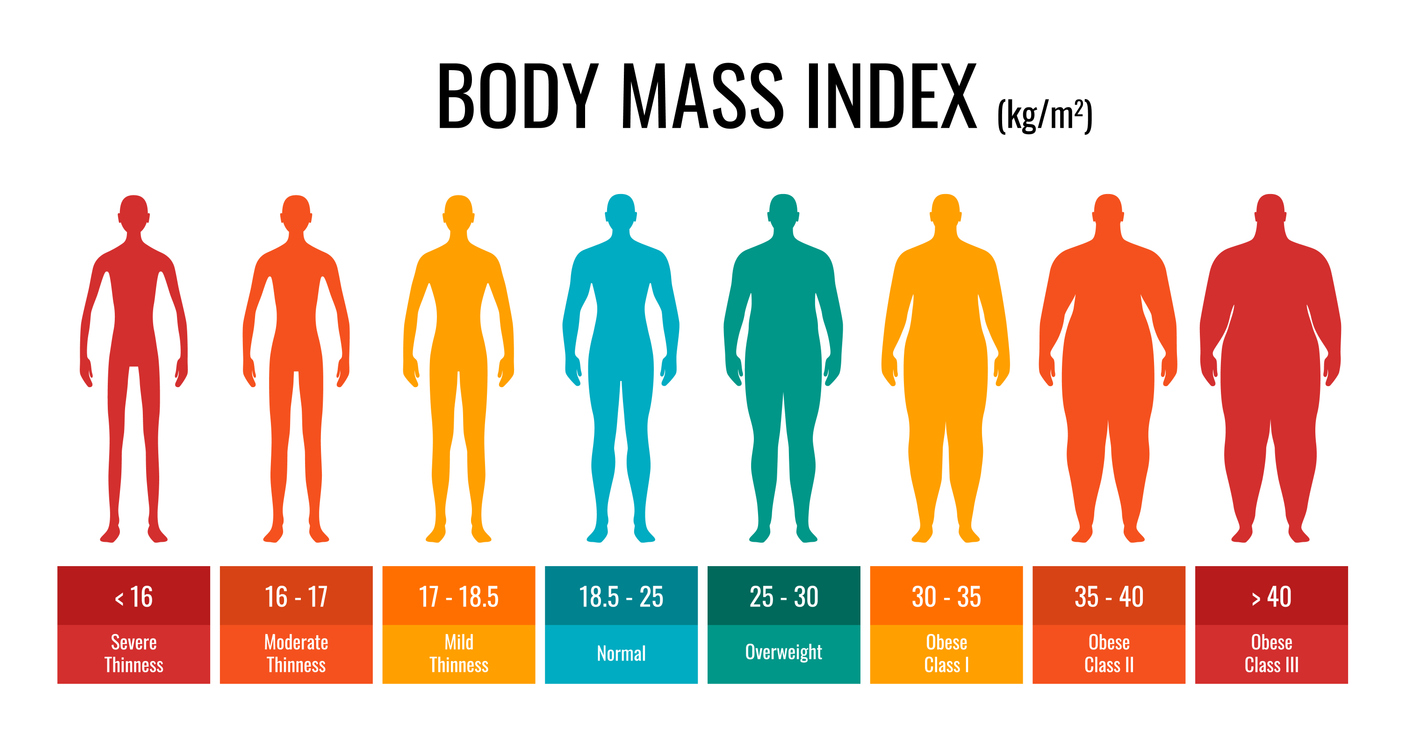
Before undergoing abdominoplasty surgery following massive weight loss, several essential factors must be considered to ensure the best possible outcome and experience.
Sufficient Knowledge of Abdominoplasty
Before you decide to have an abdominoplasty surgery after weight loss, it is vital to know everything that comes with it. This includes the surgery requirement, benefits, and risks. It is advisable to schedule a consultation with a FRACS specialist surgeon to learn more about this journey.
Overall Health and Fitness
It is essential to be in good health before undergoing abdominoplasty surgery. Patients should have stable weight, well-controlled medical conditions, and no active infections. Patients should undergo a thorough physical exam to ensure that they are fully fit for surgery.
Recovery and Downtime
Recovery from abdominoplasty surgery typically involves rest and limited activity to allow the body to heal correctly. It is essential to plan for this downtime and arrange for help with daily tasks as needed during recovery. Every person is unique, and so are our bodies. The healing process may vary from one patient to another. If you are planning to get pregnant, for example, discuss this with your surgeon at your consultation.
Realistic Expectations
While abdominoplasty can significantly improve the abdomen’s appearance by removing excess skin and tissue, it is crucial to understand that it is not a substitute for weight loss. Patients should always discuss their goals and expectations with their surgeon for clarity.
If you are considering abdominoplasty after weight loss, take the first step toward achieving your goals by scheduling a consultation with Dr. Bernard Beldholm. With his expertise and personalized approach, Dr. Beldholm can guide you through the process, discuss potential outcomes, and answer any questions you may have.
Bottom Line
Abdominoplasty after massive weight loss offers significant clinical benefits, including improved abdominal contour, potential long-term weight maintenance, and relief from functional limitations and physical discomfort. Patient satisfaction is typically high, but it is essential for individuals to consider the risks and benefits of the procedure carefully. This should include a consultation with a qualified specialist surgeon to determine the most appropriate treatment plan for their individual needs and goals.
References
- Jacobs, J. B., Schechner, S., & Jacobs, J. S. (2006). Abdominoplasty following massive weight loss. Seminars in Plastic Surgery, 20(01), 015–023.
- Brower, J. P., & Rubin, J. P. (2020). Abdominoplasty after massive weight loss. Clinics in Plastic Surgery, 47(3), 389–396.
- Restifo, R. J. (2021). Abdominoplasty in the massive weight loss patient: Are aesthetic goals and safety mutually exclusive? Aesthetic Surgery Journal, 3(2).
- Stuerz, K., Piza, H., & Kinzl, J. F. (2013). The impact of abdominoplasty after massive weight loss. Annals of Plastic Surgery, 71(5), 547–549.
- Hodgkinson, E. L., Smith, D., & Wittkowski, A. (2014). Women’s experiences of their pregnancy and postpartum body image: a systematic review and meta-synthesis. BMC Pregnancy and Childbirth, 14(1).
- Cannistrà, C., Lori, E., Arapis, K., Gallo, G., Varanese, M., Pironi, D., De Luca, A., Frusone, F., Amabile, M. I., Sorrenti, S., Gagliardi, F., & Tripodi, D. (2024). Abdominoplasty after massive weight loss. Safety preservation fascia technique and clinical outcomes in a large single series-comparative study. Frontiers in Surgery, 11.
- Stuerz, K., Piza, H., & Kinzl, J. F. (2013b). The impact of abdominoplasty after massive weight loss. Annals of Plastic Surgery, 71(5), 547–549.
- Hunecke, P., Toll, M., Mann, O., Izbicki, J. R., Blessmann, M., & Grupp, K. (2019). Clinical outcome of patients undergoing abdominoplasty after massive weight loss. Surgery for Obesity and Related Diseases, 15(8), 1362-1366.
- Hurvitz, K. A., Olaya, W., Nguyen, A., & Wells, J. H. (2014). Evidence-Based medicine. Plastic and Reconstructive Surgery, 133(5), 1214–1221.



